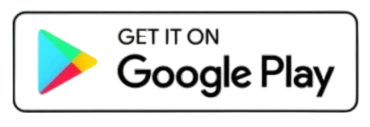AI Magic Mirror: What It Is and Where to Try It
Difference Between AI and Human Intelligence: A Comparison


Introduction
TL;DR
AI processes data fast and flawlessly, but it lacks emotion, creativity, and moral judgment. Human intelligence thrives on empathy, intuition, and imagination. The real difference between AI and human intelligence isn’t speed—it’s soul. The smartest future combines both.
As Artificial Intelligence (AI) continues to revolutionize industries—from healthcare to entertainment—one big question keeps coming up: Can machines ever think like us? Or more precisely, what is the real difference between AI and human intelligence?
While AI mimics certain aspects of human thought, it's not the same as human intelligence. This comparison is not about superiority, but about understanding how both forms of intelligence operate—how they learn, adapt, create, and make decisions.
In this blog, we explore the difference between AI and human intelligence across various aspects such as learning style, reasoning, creativity, emotion, adaptability, and real-world applications. Let’s dive in.
What Is Artificial Intelligence?
Artificial Intelligence refers to the simulation of human cognitive processes by machines. These include learning (machine learning), reasoning, problem-solving, perception (computer vision), and language understanding (NLP).
Evolution of AI
AI’s development began with symbolic reasoning and expert systems, evolved into statistical models, and has now reached deep learning and generative AI—where machines can compose music, write code, or create art based on learned patterns.
Key Capabilities
- Data processing at scale
- Pattern recognition
- Predictive analytics
- Language generation and understanding
- Autonomous decision-making (within defined rules)
Advantages of Artificial Intelligence
- Processes vast datasets quickly
- Reduces human error in repetitive tasks
- Operates continuously without fatigue
- Delivers consistent performance
- Ideal for structured environments like finance, logistics, or diagnostics
Disadvantages of Artificial Intelligence
- Requires extensive training data and infrastructure
- Cannot think abstractly or creatively outside of programmed parameters
- Vulnerable to biases in training data
- Lacks self-awareness and contextual judgment
- Limited by what it is programmed or trained to do
What Is Human Intelligence?
Human Intelligence is the collective ability to learn, reason, adapt, empathize, reflect, and act intentionally in a dynamic and emotional environment. It is shaped by biology, environment, culture, memory, and emotions.
Evolution of Human Intelligence
From early survival instincts to complex language, morality, and abstract thinking—human intelligence has evolved across millennia. It is not static or easily quantifiable, as it includes both rational and emotional dimensions.
Key Traits
- Intuition and abstract thinking
- Emotional and moral reasoning
- Consciousness and self-reflection
- Social intelligence and communication
- Learning from minimal exposure or examples
TalentSmart studies notes that emotional intelligence (EQ) explains 58% of job success—something AI still can’t copy.
Advantages of Human Intelligence
- Can apply logic and emotion to solve complex, ambiguous problems
- Intuitive in unstructured scenarios
- Capable of ethical reasoning and empathy
- Adaptable to entirely new situations without prior exposure
- Creates meaning, not just patterns
Disadvantages of Human Intelligence
- Limited processing capacity compared to machines
- Prone to cognitive biases and emotional influence
- Fatigue, stress, and distractions affect performance
- Memory is fallible
- Vulnerable to misinformation and manipulation
Shared Ground: Key Similarities Between AI and Human Intelligence

Before diving into the distinctions, it’s important to recognize their shared capabilities—though they originate from fundamentally different systems.
Similarity Area | Explanation |
Learning from Data | Both can improve over time by identifying and using patterns in input data |
Problem Solving | Both analyze variables and make decisions to achieve a goal |
Pattern Recognition | Capable of detecting repeated trends or similarities in information |
Adaptability | Adjust behavior or output based on changing inputs (though in different ways) |
Goal-Oriented Action | Function with pre-defined objectives and can optimize actions toward outcomes |
A report by Boston Consulting Group found that only 26% of companies have developed the capabilities to generate significant value from AI.
Core Differences: AI vs Human Intelligence
Aspect | Artificial Intelligence | Human Intelligence |
Learning Mechanism | Data-driven training with defined algorithms | Experience-based, emotional, and social learning |
Adaptability | Adapts within trained boundaries | Adapts to unknown, unpredictable environments |
Creativity | Replicates based on data; lacks genuine originality | Imagines and invents from scratch; not limited by prior inputs |
Emotional Intelligence | Mimics responses but does not feel | Understands, feels, and responds to emotions authentically |
Intuition | Lacks instinct; follows logic | Gut decisions based on subconscious pattern recognition |
Consciousness | Operates without self-awareness | Aware of self, surroundings, and morality |
Generalization | Effective within trained scope | Can apply learnings across domains and abstractions |
Memory | Vast but rigid; data retrieval is exact | Associative, interpretive, and often approximate |
Multitasking | High-speed, sequential processing | Juggles competing priorities with contextual understanding |
Speed | Executes calculations at lightning speed | Slower but more nuanced decision-making |
Morality | Programmed or rule-based ethics | Learned and debated; shaped by culture, society, and introspection |
Physical Presence | Limited to robotic or virtual interfaces | Full sensory and kinetic embodiment |
Perception | Interprets data from sensors | Informed by senses, emotion, history, and culture |
Reasoning | Deductive, mathematical, or statistical | Integrates logical, emotional, and ethical reasoning |
Motivation | Operates only when triggered | Driven by needs, passions, curiosity, and survival instinct |
Decision-Making | Based on logic or scoring systems | Balances data, ethics, emotion, and intuition |
Error Handling | Rule-based error correction | Uses trial, improvisation, and emotional response |
Communication | Structured language models | Uses tone, gestures, metaphor, and emotion |
Empathy | Can simulate it, but doesn’t feel it | Experiences and responds empathetically |
Self-Improvement | Relies on retraining by engineers | Driven by internal motivation, reflection, and willpower |
Mortality | Doesn’t age or decay, but depends on updates and systems | Biologically finite, experiences growth and decay |
MIT Tech Review (2024) highlights that AI models excel in accuracy but fail in moral reasoning and empathy.
Real-World Coexistence: AI and HI in Practice
Domain | AI’s Role | Human Intelligence’s Role |
Healthcare | Diagnosing images, tracking vitals | Empathetic care, clinical decision-making |
Education | Personalized content delivery | Mentorship, ethical and emotional development |
Retail | Dynamic pricing, personalized recommendations | Brand storytelling, customer relationships |
Creative Design | Generating templates, variation suggestions | Vision, narrative, originality |
Customer Support | First-level automation and FAQ resolution | Handling complaints, nuanced empathy, conflict resolution |
Can AI Ever Replicate Human Intelligence?
The concept of Artificial General Intelligence (AGI) proposes that machines could someday match or surpass human intelligence. While machine learning models have made strides, they’re still far from understanding:
- Complex emotions
- Contextual judgment
- Intuition and conscience
AGI remains theoretical. Replicating consciousness, emotional depth, and moral decision-making would require breakthroughs not only in tech but in understanding the human mind itself.
Why the Human Element Still Matters
Despite AI’s speed and efficiency, the human brain is unmatched in areas like:
- Emotional intelligence: Making people feel heard, valued, and supported.
- Ethical judgment: Making tough decisions based on moral grounds.
- Creative depth: Producing truly original ideas and artworks.
- Social understanding: Navigating complex cultural or emotional situations.
AI works best as a collaborative tool, not a replacement. The future is about human-AI synergy—where machines enhance what we do, not compete with who we are.
Did You Know?
Your brain has around 86 billion neurons, while ChatGPT runs on trillions of parameters—but neurons still win when it comes to emotional reasoning!
The Future: Will AI Replace Human Intelligence?
Short answer: No—but we’ll need to evolve with it.
Stephen Hawking once warned that AI could redesign itself faster than human evolution can adapt.
Still, the future lies in collaboration, not competition:
- AI boosts human efficiency
- Humans guide AI with purpose and empathy
- Human-in-the-loop systems ensure balance
Glance AI echoes this idea—your personalized AI twin helps you explore styles that fit your vibe, while you bring judgment and creativity to the mix.
Conclusion
The difference between AI and human intelligence lies in far more than just speed or memory. It’s about emotion, ethics, and creativity. While AI excels in processing and pattern recognition, it lacks the heart, intuition, and moral compass that define humanity.
AI will keep evolving, making our lives easier, more efficient, and increasingly personalized. But human intelligence—with all its imperfections—is what brings meaning, art, emotion, and empathy to our world.
As we build smarter machines, let’s also focus on becoming wiser humans. After all, the best results come not from replacing one with the other—but from working together.
FAQs
1. What is the biggest difference between AI and human intelligence?
The biggest difference is that AI processes data and follows algorithms, while human intelligence blends reasoning with emotions, creativity, and life experiences. AI can analyze vast amounts of information quickly and accurately, but it lacks intuition, empathy, and self-awareness. Humans can adapt to new situations and make decisions with limited information, while AI usually requires large datasets to learn effectively. This means AI excels in speed and precision, but humans remain better at nuanced judgment and creative problem-solving.
2. Can AI become smarter than humans?
AI can become smarter than humans in certain tasks, and it already has in areas like data analysis, pattern detection, and complex calculations. But being “smarter overall” is different. Human intelligence includes intuition, emotions, ethics, and lived experience, which AI still cannot replicate. Experts do discuss the possibility of Artificial Superintelligence, the idea that AI could eventually surpass humans in most abilities, but this is still theoretical. For now, AI can outperform us in speed and scale, while humans remain stronger at creativity, empathy, and judgment.
3. Is AI creative like humans?
AI can appear creative, but it is not creative in the human sense. It generates new ideas by remixing patterns it has learned from massive datasets, while humans create from emotion, intuition, and lived experience. AI can sometimes outperform people in narrow creative tasks like drafting visuals or brainstorming variations, yet it cannot form original intent or create with personal meaning. This is why most experts see AI as a partner that speeds up the creative process, while the depth, direction, and originality still come from humans.
4. How do humans and AI learn differently?
Humans and AI learn in fundamentally different ways. Humans absorb knowledge through experience, emotion, and context—sometimes from a single moment—while AI learns by processing huge amounts of data and finding statistical patterns. Humans can adapt instincts, intuition, and real-world judgment to new situations, but AI needs training examples and clear objectives to improve. This is why people handle nuance, ambiguity, and ethical decisions better, while AI excels at speed, scale, and pattern recognition.
5. Will AI replace human jobs?
AI will replace some human jobs, but not all. It’s already automating repetitive, rules-based tasks, yet most roles won’t disappear—they’ll shift. AI takes over the predictable work, while humans focus on creativity, empathy, strategy, and hands-on problem-solving. Sectors that rely on real human connection or physical skill, like healthcare, education, and skilled trades, are far less likely to be fully automated. Instead of a full takeover, the future looks more like humans and AI working side-by-side, with new job categories emerging as old ones evolve.







